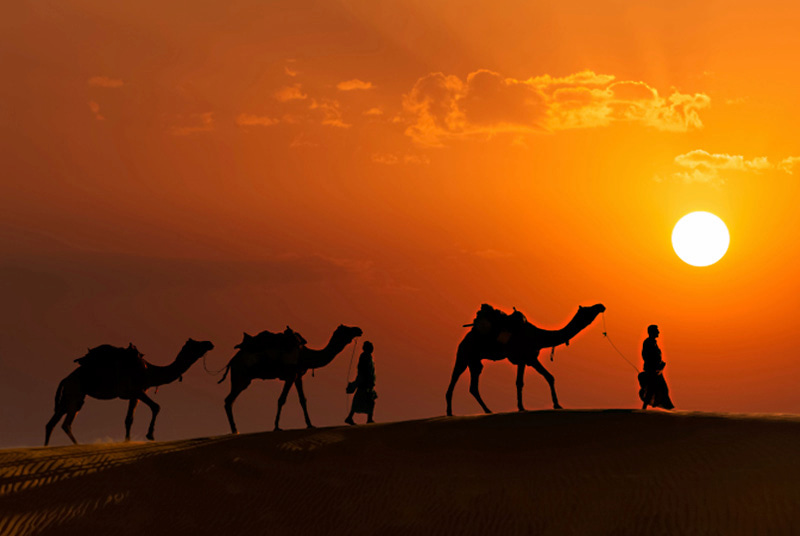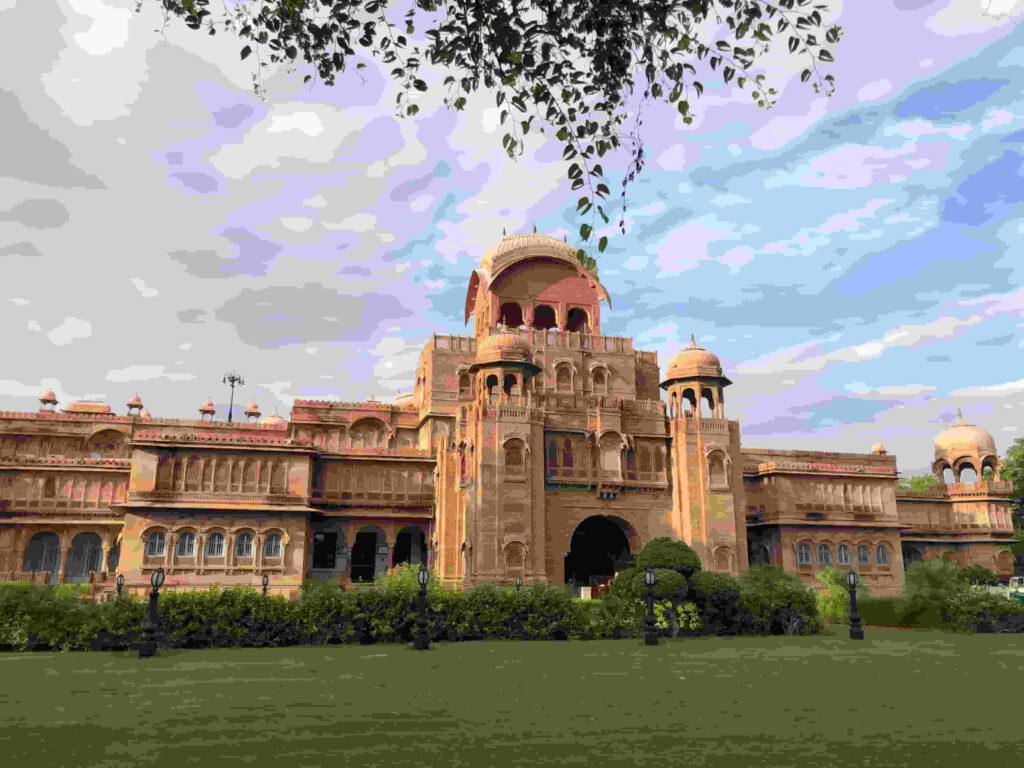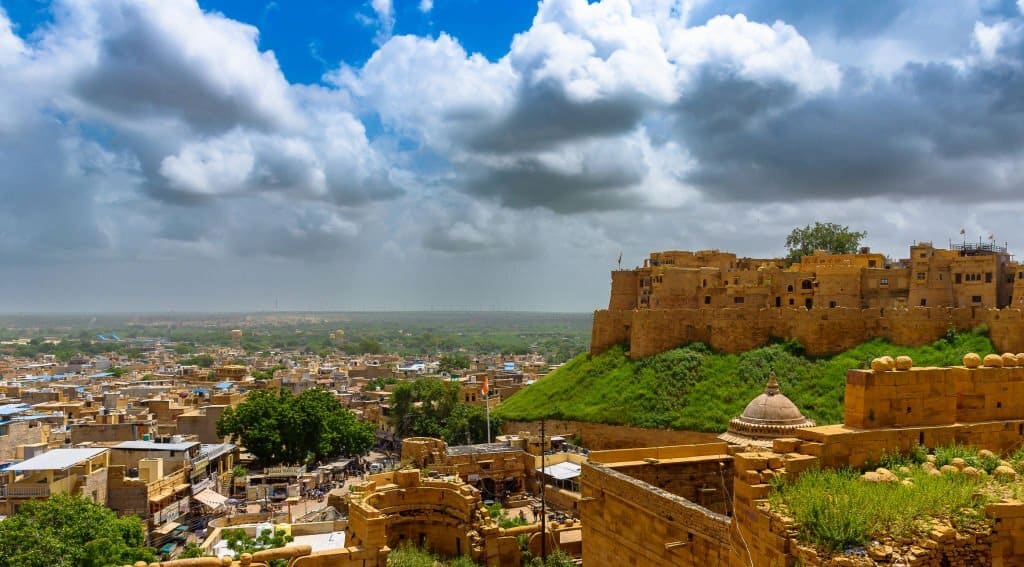Rajasthan Master Plan 2031: The Rajasthan Master Plan functions as a comprehensive and progressive urban planning structure intended to guide the state of Rajasthan towards sustainable development and progress. The present strategy has been meticulously designed to address the unique obstacles that arise in the management of urban regions, all the while promoting comprehensive socio-economic and environmental progress. The comprehensive framework integrates various regulations, policies, and initiatives pertaining to transportation, infrastructure, land use, and environmental preservation. Its overarching objective is to promote cities that are both inclusive and resilient.
Particular frameworks are developed for cities such as Jaipur, Jaisalmer, and Jodhpur within the master plan. Future-oriented development proposals, including improvements to transportation systems, stimulation of economic expansion, and establishment of community amenities, are delineated in each plan. The Department of Urban Development creates these master plans, which serve as crucial blueprints for guiding the development of infrastructure within the state. This article offers an analysis of the Rajasthan Master Plan 2031 as it pertains to several cities throughout the state.
Rajasthan Master Plan: Essential Elements

- Infrastructure development is preoccupied with the enhancement of water supply, waste management, roads, sanitation systems, and electricity distribution.
- Effectively allocating land for commercial, industrial, institutional, residential, and recreational uses is the objective of land use planning.
- Transportation planning entails the establishment of an interconnected transportation infrastructure, encompassing rural connectivity, public transit, and roadways.
- Promoting the development of affordable housing projects and addressing housing requirements are examples of affordable housing initiatives.
- Conserving the environment by emphasizing the maintenance of natural resources, green spaces, and efficient waste management.
- Implementing initiatives to enhance living conditions and assimilating slum residents into the urban fabric constitutes slum rehabilitation.
- Heritage and culture preservation entails safeguarding traditional architecture, cultural locations, and historical monuments.
- Planning social infrastructure entails the integration of community centers, parks, recreational areas, hospitals, and schools.
- Employment generation and economic expansion: encouraging investment, generating employment opportunities, and fostering economic expansion.
- Public engagement and participation: incorporating the input of private sector entities, government agencies, urban planners, and local communities during the planning phase.
- To enhance resilience and disaster management, infrastructure and emergency response systems must be fortified.
Jaipur Master Plan

The Jaipur master plan, which is under the direction of renowned architect Vidhyadhar Bhattacharya, serves as a crucial planning document that guides the city’s methodical growth. Notwithstanding its historical standing as a meticulously designed metropolis, the escalating process of urbanization requires thoughtful deliberation regarding forthcoming expansion.
Jaipur’s present development strategy has been extended until 2025, in recognition of the city’s accelerated urbanization and population expansion. According to a projection by the urban development department, Jaipur and its neighboring regions are expected to experience a population of 7,561,604 by the specified year.
The development strategy foresees substantial expansion in peripheral municipalities, including Chomu and Bagru. To support this expansion, the city and its environs will necessitate resilient infrastructure in multiple domains:
Civil infrastructure
- The treatment of sewage
- Consistent water supply
- Systems for solid refuse management
- Facilities for generating electricity
- Educational establishments
The plan delineates the prerequisites for a minimum of 168 schools that accommodate individuals with disabilities by 2025, in addition to 3025 pre-primary schools, 1512 primary schools, and 1008 senior secondary schools, in anticipation of the educational demands that may arise.
Provision of healthcare services
In order to meet the healthcare needs of the Jaipur district, the proposed strategy identifies the establishment of a minimum of 30 completely equipped general hospitals and 76 intermediate hospitals.
Discover the Best Salons in Delhi for a Luxurious Beauty Experience!
Establishments for tourism infrastructure
The strategic plan underscores the criticality of establishing sufficient infrastructure, amenities, and improved connectivity solutions to facilitate the rapid growth of the tourism sector in Jaipur.
Given the swift urbanization and considerable migration of individuals from rural regions, Jaipur is positioned to undergo substantial growth and development in the coming decade. The master plan guarantees the systematic and sustainable management of this expansion.
Udaipur Strategic Plan

Udaipur, a city celebrated for its picturesque landscapes, palaces, and tourist attractions, is implementing the Udaipur Master Plan 2031 to advance sustainable development. Amid a thriving tourism sector and the conflict between urban growth and historical appeal, the city faces the challenge of accommodating increasing urban requirements. The master plan outlines strategies for various aspects of the community, including road infrastructure, social amenities, connectivity solutions, water management, and employment opportunities. It functions as a strategic road map.
Sustainable development of infrastructure
Preparing the groundwork for sustainable infrastructure development to effectively accommodate the expansion of the municipality while guaranteeing the conscientious application of resources.
Preservation and urban expansion
A critical component of the master plan is ensuring that urban expansion and the conservation of Udaipur’s unique historical sites and scenic allure coexist in harmony.
Enhancing the social infrastructure
Placing emphasis on the improvement of social infrastructure, encompassing healthcare, education, recreational facilities, and community centers, to augment the overall standard of living for the inhabitants of Udaipur.
Networking solutions
Promoting enhanced connectivity throughout the city using well-designed roadways and streamlined public transportation to augment mobility and accessibility.
Management and conservation of water
Recognizing the critical importance of water accessibility and environmentally responsible water governance, the strategy strives to protect the lakes and bodies of water in Udaipur.
Construction of employment
A primary goal is to foster a diversified economy and attract investments to provide sufficient employment opportunities for the rapidly expanding population of the city.
Infrastructure improvement for roads
Improving road infrastructure is of the utmost importance to mitigate traffic congestion and increase the overall efficacy of transportation.
Consistent with the city’s ethos, the Udaipur Master Plan 2031 delineates an all-encompassing vision that seeks to reconcile the complexities of progress with the preservation of its cultural and historical heritage.
Jodhpur Strategic Plan

Jodhpur, being the second most populous city in Rajasthan, undertakes a significant role in the Rajasthan Master Plan 2031, an indication of its critical importance in the realm of urban development. The Jodhpur Master Plan 2031 has been carefully designed to consider a multitude of factors, including but not limited to improved connectivity, technological progress, streamlined public transportation, state-of-the-art social amenities, infrastructure growth, expanding employment prospects, and the changing requirements of a swiftly expanding metropolis. The following are essential elements of the Jodhpur Master Plan 2031:
A holistic approach to development
The master plan adopts a comprehensive approach to development, taking into consideration crucial elements to cultivate a meticulously designed and vast urban environment.
Initiations for urban transformation
To meet the varied requirements of the populace, endeavors encompass the construction of a sports city, corporate parks, and a festival city.
Diversified construction
Infrastructure development encompasses the construction of upscale medical facilities, amusement parks, IT parks, vacation cottages, and golf courses, in addition to robust public utilities.
Water supply emphasis
The development plan prioritizes water availability to a considerable extent, aiming to augment water provision from 312 MLD in 2014 to 624 MLD by 2044.
Tourism advertising
Recognizing the historical significance of Jodhpur, the strategy emphasizes endeavors to cultivate the locale’s tourism capabilities. This initiative is predicated on the conservation and propagation of historical landmarks, including the Mahamandir, Mehrangarh Fort, Jaswant Thada, Ummed Palace, and Ghantaghar.
The Jodhpur Master Plan 2031 serves as evidence of the state’s dedication to advancing the city’s sustainable development by integrating its urban imperatives with its rich historical heritage.
Bikaner Master Plan

With the implementation of its master plan, Bikaner, a crucial city in Rajasthan, is making substantial progress toward transformative urban development. This ambitious vision, which supersedes the previous strategy that was operational until 2023, has been extended to 2043. The master plan, which is a joint venture among the state government, WAPCOS (a central government agency), and UIT Bikaner, prioritizes industrial development while concurrently safeguarding critical ecological and social dimensions. Crucial elements comprising the Bikaner Master Plan are:
Complete coverage of the territory
Spread across 63 villages and an expansive area of 1 lakh hectares, the master plan ensures a comprehensive transformation by adopting a holistic approach to planned urban development.
A strategic outlook on industrial progress
The primary objective of the master plan is to foster industrial expansion in Bikaner, thereby stimulating economic development and creating job prospects.
Approach to collaborative development
The master plan, which was formulated in conjunction with WAPCOS and UIT Bikaner, capitalizes on the combined knowledge and assets of these institutions to ensure successful execution and enduring outcomes.
Incorporating mapping
The map that is being proposed for Bikaner City will be an all-encompassing depiction, encompassing critical features including lakes, forests, water sources, colleges, schools, major roads, and village roads. This methodology guarantees a sustainable and harmonious ecosystem.
Zonal strategies
The master plan implements a sophisticated approach through the incorporation of six zonal plans, which provide a comprehensive and focused strategy for progress in various sectors and regions throughout Bikaner.
Empowering significant localities
Intending to foster inclusive development and prosperity in key villages including Beechwal, Pemasar, Himtasar, Udasar, Karmisar, Jodbeed, Bheenasar, Shivbadi, Gangashahar, Sriramsar, Panpalsar, and Natthusar, the master plan emphasizes empowering these areas.
The Bikaner Master Plan exemplifies a progressive and cooperative strategy for harmonizing industrial advancement with environmental and social welfare.
Jaisalmer Master Plan

Jaisalmer, situated in western Rajasthan, is a dynamic metropolis where the convergence of modernity and tradition requires a calculated approach to address the changing requirements of its burgeoning populace. The Jaisalmer Master Plan 2031 provides a methodical and citizen-centric framework for guiding the city’s development. The principal components of the Jaisalmer Master Plan 2031 consist of:
Services centered on citizens
The strategy places a high value on critical services, guaranteeing a continuous provision of potable water, effective sewerage treatment, and uninterrupted power to accommodate the changing requirements of the inhabitants.
Wind energy advocacy
Leveraging the breezy topography of Jaisalmer, the master plan advocates for the establishment of wind energy farms, which would generate electricity using wind power and contribute to the development of sustainable and renewable energy solutions.
Constant connectivity
The establishment of a resilient connectivity ecosystem is anticipated to augment tourism and business operations, thereby liberating the economic latent of Jaisalmer and cultivating a flourishing milieu for interactions at both local and global levels.
Upgrading of infrastructure
In light of the difficulties presented by the surge in traffic volume, the strategy emphasizes the enhancement of current road infrastructure and roundabouts, as well as the creation of sufficient parking facilities throughout Jaisalmer, to facilitate seamless movement among its inhabitants.
Tourism and preservation of heritage
Recognizing the abundant cultural legacy of the city, the strategy effectively manages the dual objectives of advancing tourism infrastructure and safeguarding historical locations. This dual approach serves to foster economic expansion while simultaneously safeguarding the cultural heritage of Jaisalmer.
The process of diversifying economic activities
Through the establishment of various establishments such as amusement parks, wind power stations, nurseries, weighbridges, and dairy farms, the master plan aims to promote economic diversification in Jaisalmer.
The Jaisalmer Master Plan 2031 represents a comprehensive vision that effectively merges contemporary conveniences with the safeguarding of cultural heritage, thereby guaranteeing the residents a sustainable and prosperous future.
The municipalities encompassed within the Rajasthan Master Plan 2031
- Abu Road
- Aklera
- Ajmer
- Alwar
- Bali
- Balotra
- Bandikui
- Amet
- Banswara
- Baran
- Bharatpur City
- Bhinmal
- Bhusawar
- Bhaanimani
- Bhinder
- Chaksu
- Chapar
- Chhabra
- Choti Sadri
- Chittorgarh
- Deoli
- Deshnok
- Dungarpur
- Dholpur
- Fatehnagar-Sanwar
- Jahajpur
- Jaisalmer
- Jalore
- Jaitaran
- Jhalawar
- Kapasan
- Kapasana
- Karauli
- Kaprain
- Kekri
- Khetri
- Kherli
- Kushalgarh
- Kishangarh
- Falana
- Lakshmangarh
- Ladnu
- Lakheri
- Losal
- Lalsot
- Merta City
- Mukundgarh
- Mundwa
- Nagar
- Nadbai
- Nim Ka Thana
- Nokha
- Nimbahera
- Niwai
- Padampur
- Pindwara
- Pilibanga
- Pipar city
- Pirawa
- Pokhran
- Rajsamand
- Ramganjmandi
- Ramgarh
- Rajgarh
- Rani Khurd
- Sadri
- Sadulshahar
- Sambhar
- Sanchor
- Salumbar
- Neemrana Behror
- Sri Madhopur
- Mount Abu
- Sikar
- Sojat
- Taranagar
- Tijara
- Takhatgarh
- Todabhim
- Todaraisingh
- Surajgarh
- Weir
- Shahpura
- Bikaner
- Hanumangarh
- Shri Ganganagar
- Kaithoon
- Dungarpur
- Hindaun
- Kota
- Badi
- Pali
- Mandalgarh
- Degana
- Anta
- Sardarshahar
- Anupgarh
- Asind
- Baggar
- Badi Sadri
- Barmer
- Bayana
- Begun
- Beawar
- Bidasar
- Bhadra
- Bilara
- Bissau
- Bundi
- Bijainagar-Gulabpura
- Churu
- Dausa
- Deeg
- Deogarh
- Deedwana
- Fatehpur
- Gajsinghpur
- Greater Bhiwadi
- Gangapur City
- Indragarh
- Jhunjhunu
- Jodhpur
- Jobner
- Kaman
- Kanor
- Kesrisinghpur
- Keshoraipatan
- Khandela
- Khairthal
- Udaipur




